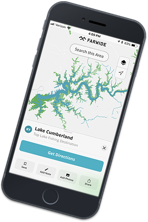Every state in FarWide’s database has non-resident hunting licenses. These licenses are often more expensive and limited in season dates or draw odds than resident licenses. So why would someone want to leave areas they are familiar with to hunt somewhere else?
The most obvious answer is to pursue a species whose range doesn’t overlap their own. For example, a hunter from Alabama won’t happen across a Moose down there but could try for one in Montana, Wyoming, or Maine.
Another reason to travel is to get a kick start on the hunting season. Getting an early start is particularly appealing to waterfowl hunters who might not see birds for months after seasons are underway in northern states. A hunter could start early in North Dakota whose nonresident duck season opened on September 29th then move into Nebraska with a duck season that opened on October 6th. A truly passionate hunter could follow the migration to Texas where they can hunt ducks until January 27th of next year. If done correctly this could turn the regular duck season into a long chase spanning every latitude of our nation.
Alas, most have responsibilities which would prevent such an exciting trip. So maybe the average hunter is more apt to take a short trip to hunt with friends and family. Many states have licenses designed for this such as a 3-day Non-Resident Hunting License in South Carolina, or the Come Home to Hunt license in Montana.
When you are ready to take a trip to a different area, start and end your trip with FarWide. Pick your new state, pick your species and then dig into the regs. Use FarWide to figure out what dates you can hunt, what licenses you need, and where you can access public or private land. Once you’re on the hunt use FarWide to navigate and save points of interest. Label each point, take notes on them and share them with friends. Any day afield in a new area will be exciting, but make sure FarWide is there to help along the way.8mm56














6565 Comments
Leave Comment
Cancel Reply